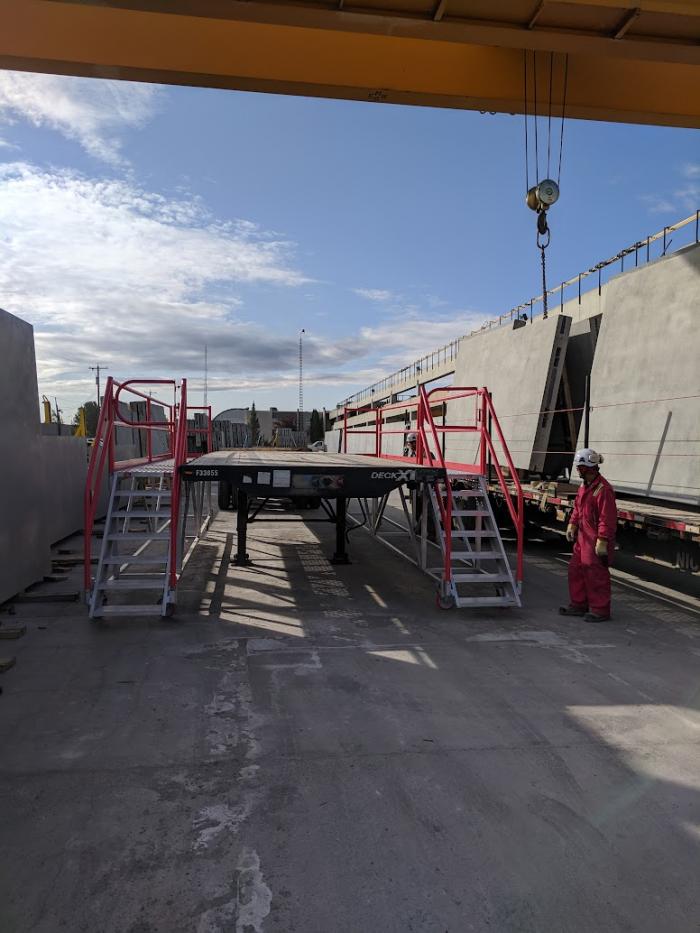Prioritizing Safety in the Transport Industry with Safeloader

In the world of construction and logistics, loading trucks is an essential task that requires precision, attention to detail, and above all, a strong commitment to safety. Tragically, recent incidents like the one reported in the article "Construction Worker Killed in Workplace Incident" remind us of the potential dangers involved in this line of work. This blog post aims to shed light on why safety should always be the top priority when loading trucks, emphasizing the importance of proper procedures and precautions to prevent accidents and protect the well-being of workers.
1. Mitigating the Risk of Falls:
One of the primary safety concerns when loading trucks is the risk of falls. Workers are often required to operate at heights, such as when loading materials onto elevated platforms or flatbed trailers. By adhering to safety protocols, such as wearing appropriate personal protective equipment (PPE) like harnesses, ensuring stable footing, and employing fall protection systems, the likelihood of accidents and injuries can be significantly reduced.
2. Preventing Strains and Musculoskeletal Injuries:
Loading trucks involves physical exertion, as workers often handle heavy and awkwardly shaped objects. Failing to follow proper lifting techniques can lead to strains, sprains, and other musculoskeletal injuries. By promoting safe lifting practices, such as using mechanical aids when necessary, maintaining proper posture, and providing adequate training, companies can help safeguard the well-being of their workers and prevent long-term health complications.
3. Avoiding Collisions and Crush Hazards:
Loading docks can be hectic and crowded environments, with numerous vehicles and personnel moving simultaneously. It is vital to establish clear communication channels and implement strict traffic management protocols to minimize the risk of collisions. Workers must be trained to be vigilant, use warning signs and signals effectively, and maintain a safe distance from moving vehicles and heavy equipment. Additionally, ensuring that loads are securely positioned and restrained can prevent items from shifting or falling during transit, thereby avoiding potential crush hazards.
4. Handling Hazardous Materials:
Certain industries involve the transportation of hazardous materials, which adds another layer of complexity and risk to the loading process. Adequate safety measures must be implemented, including proper labeling, appropriate storage and handling techniques, and compliance with relevant regulations and guidelines. Workers must receive specialized training to handle these materials safely, minimizing the potential for accidents, spills, or exposure to harmful substances.
5. Cultivating a Safety Culture:
Safety is not solely the responsibility of individual workers; it is a collective effort that requires the commitment and engagement of everyone involved. Employers play a crucial role in fostering a safety-conscious culture by providing comprehensive training programs, conducting regular safety inspections, and encouraging open communication channels where workers can report concerns or near-miss incidents. Recognizing and rewarding safety achievements further reinforces the importance of adhering to safety protocols.
Conclusion:
The unfortunate incident highlighted in the article underscores the paramount importance of safety when loading trucks. By prioritizing safety measures such as fall prevention, proper lifting techniques, traffic management, and hazardous material handling, companies can create a secure working environment that protects workers' lives and well-being. Ultimately, investing in safety not only prevents accidents and injuries but also boosts productivity, enhances employee morale, and contributes to the long-term success of the organization. Products like the SafeSmart Access SafeLoader are designed for these very safety concerns. When it comes to loading trucks, safety should always be the driving force behind every action taken.
For more information about our SafeLoader, click here.





